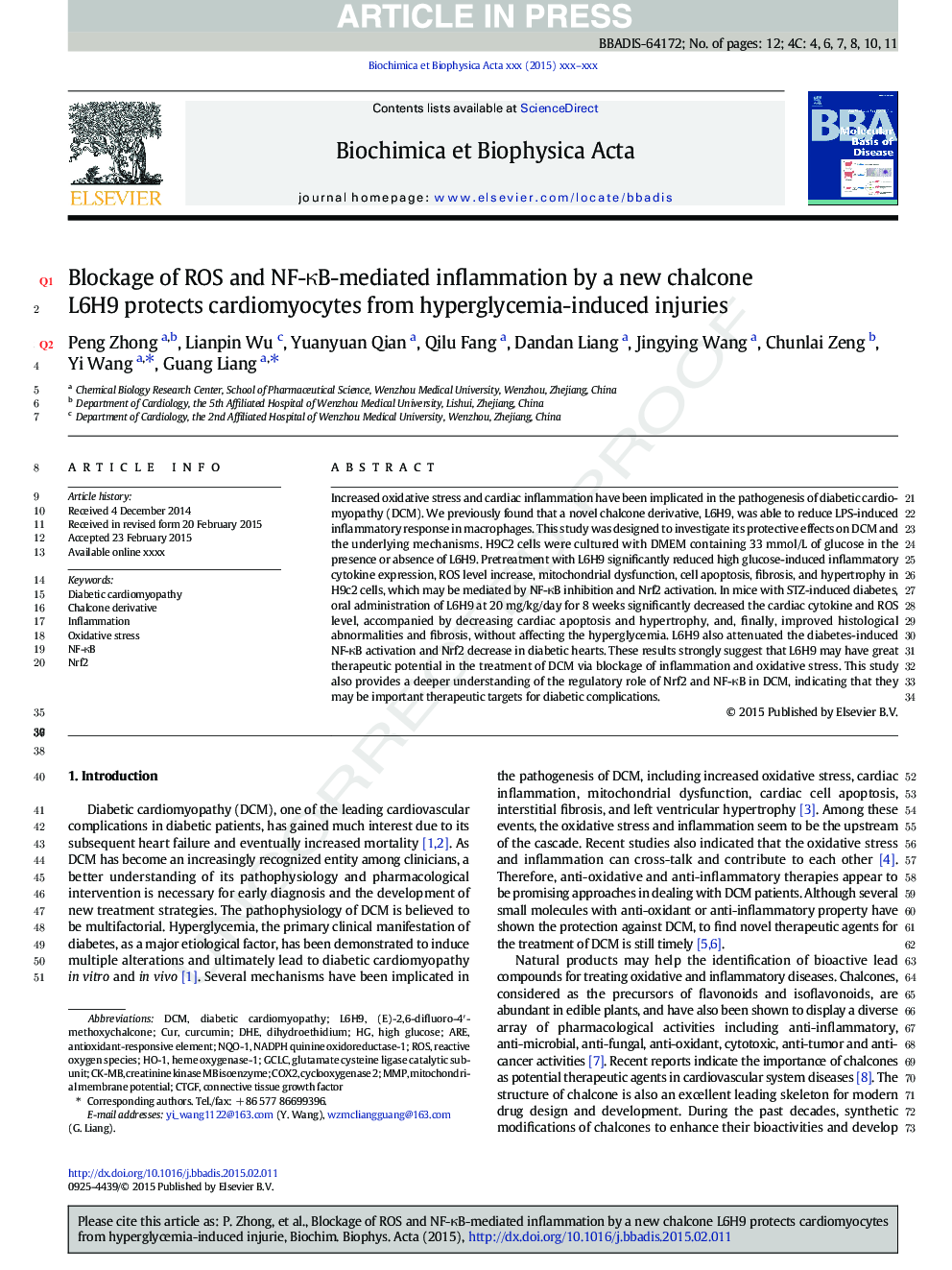| Article ID | Journal | Published Year | Pages | File Type |
|---|---|---|---|---|
| 8259780 | Biochimica et Biophysica Acta (BBA) - Molecular Basis of Disease | 2015 | 12 Pages |
Abstract
Increased oxidative stress and cardiac inflammation have been implicated in the pathogenesis of diabetic cardiomyopathy (DCM). We previously found that a novel chalcone derivative, L6H9, was able to reduce LPS-induced inflammatory response in macrophages. This study was designed to investigate its protective effects on DCM and the underlying mechanisms. H9C2 cells were cultured with DMEM containing 33 mmol/L of glucose in the presence or absence of L6H9. Pretreatment with L6H9 significantly reduced high glucose-induced inflammatory cytokine expression, ROS level increase, mitochondrial dysfunction, cell apoptosis, fibrosis, and hypertrophy in H9c2 cells, which may be mediated by NF-κB inhibition and Nrf2 activation. In mice with STZ-induced diabetes, oral administration of L6H9 at 20 mg/kg/day for 8 weeks significantly decreased the cardiac cytokine and ROS level, accompanied by decreasing cardiac apoptosis and hypertrophy, and, finally, improved histological abnormalities and fibrosis, without affecting the hyperglycemia. L6H9 also attenuated the diabetes-induced NF-κB activation and Nrf2 decrease in diabetic hearts. These results strongly suggest that L6H9 may have great therapeutic potential in the treatment of DCM via blockage of inflammation and oxidative stress. This study also provides a deeper understanding of the regulatory role of Nrf2 and NF-κB in DCM, indicating that they may be important therapeutic targets for diabetic complications.
Keywords
NF-κBMMPcox2CK-MBCURGCLCCTGFDCMHO-1Nrf2NQO-1Heme oxygenase-1ROSinflammationOxidative stressdihydroethidiumcyclooxygenase 2antioxidant-responsive elementConnective tissue growth factorChalcone derivativeAREDHEMitochondrial membrane potentialdiabetic cardiomyopathyGlutamate cysteine ligase catalytic subunitCurcuminhigh glucoseReactive oxygen species
Related Topics
Life Sciences
Biochemistry, Genetics and Molecular Biology
Ageing
Authors
Peng Zhong, Lianpin Wu, Yuanyuan Qian, Qilu Fang, Dandan Liang, Jingying Wang, Chunlai Zeng, Yi Wang, Guang Liang,
